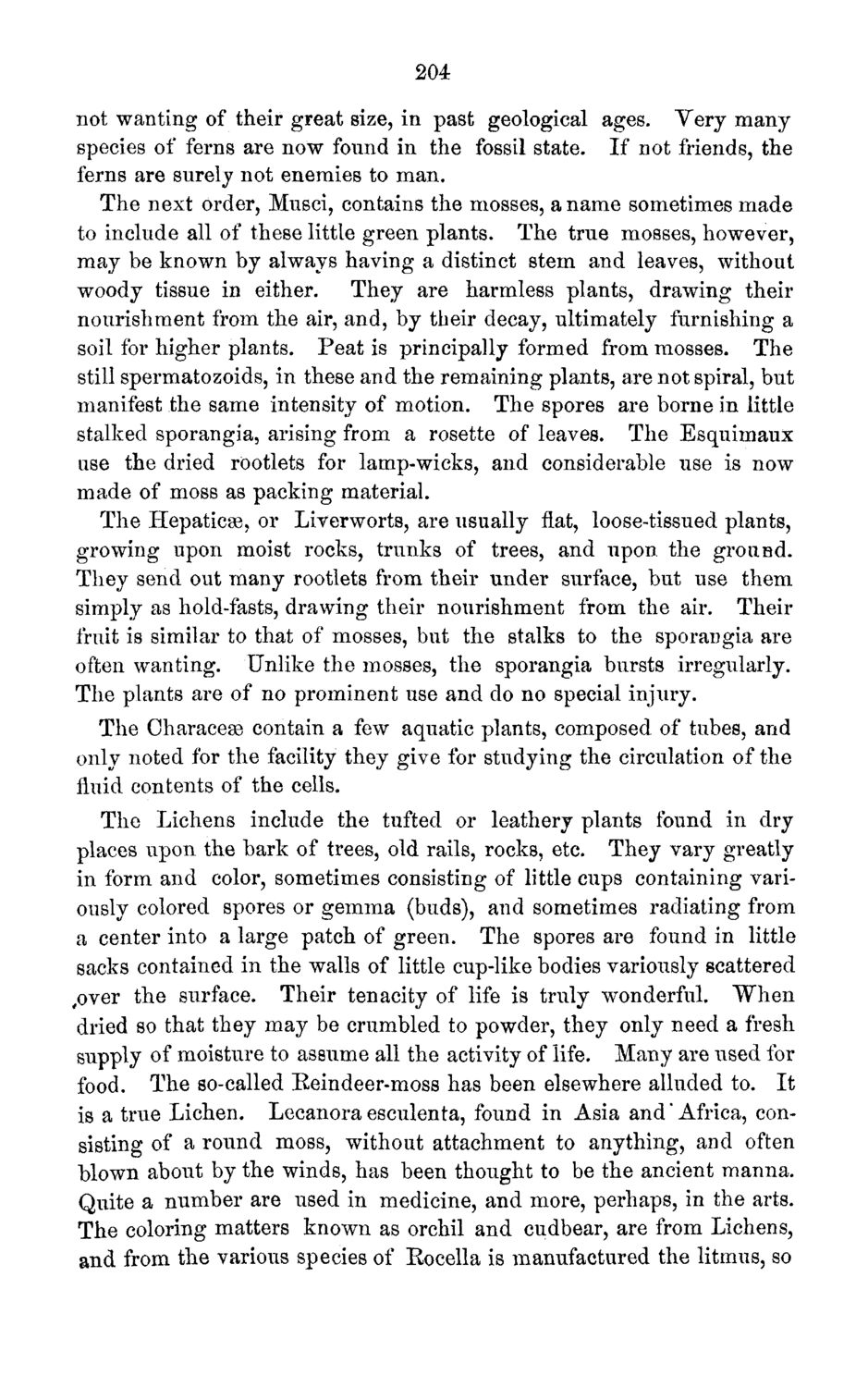| |
| |
Caption: Board of Trustees Minutes - 1871
This is a reduced-resolution page image for fast online browsing.

EXTRACTED TEXT FROM PAGE:
204 not wanting of their great size, in past geological ages. Very many species of ferns are now found in the fossil state. If not friends, the ferns are surely not enemies to man. The next order, Musci, contains the mosses, a name sometimes made to include all of these little green plants. The true mosses, however, may be known by always having a distinct stem and leaves, without woody tissue in either. They are harmless plants, drawing their nourishment from the air, and, by their decay, ultimately furnishing a soil for higher plants. Peat is principally formed from mosses. The still spermatozoids, in these and the remaining plants, are not spiral, but manifest the same intensity of motion. The spores are borne in little stalked sporangia, arising from a rosette of leaves. The Esquimaux use the dried rootlets for lamp-wicks, and considerable use is now made of moss as packing material. The Hepaticse, or Liverworts, are usually flat, loose-tissued plants, growing upon moist rocks, trunks of trees, and upon the ground. They send out many rootlets from their under surface, but use them simply as hold-fasts, drawing their nourishment from the air. Their fruit is similar to that of mosses, but the stalks to the sporaugia are often wanting. Unlike the mosses, the sporangia bursts irregularly. The plants are of no prominent use and do no special injury. The Characese contain a few aquatic plants, composed of tubes, and only noted for the facility they give for studying the circulation of the fluid contents of the cells. The Lichens include the tufted or leathery plants found in dry places upon the bark of trees, old rails, rocks, etc. They vary greatly in form and color, sometimes consisting of little cups containing variously colored spores or gemma (buds), and sometimes radiating from a center into a large patch of green. The spores are found in little sacks contained in the walls of little cup-like bodies variously scattered ,over the surface. Their tenacity of life is truly wonderful. When dried so that they may be crumbled to powder, they only need a fresh supply of moisture to assume all the activity of life. Many are used for food. The so-called Eeindeer-moss has been elsewhere alluded to. It is a true Lichen. Lecanoraesculenta, found in Asia and'Africa, consisting of a round moss, without attachment to anything, and often blown about by the winds, has been thought to be the ancient manna. Quite a number are used in medicine, and more, perhaps, in the arts. The coloring matters known as orchil and cudbear, are from Lichens, and from the various species of Eocella is manufactured the litmus, so
| |